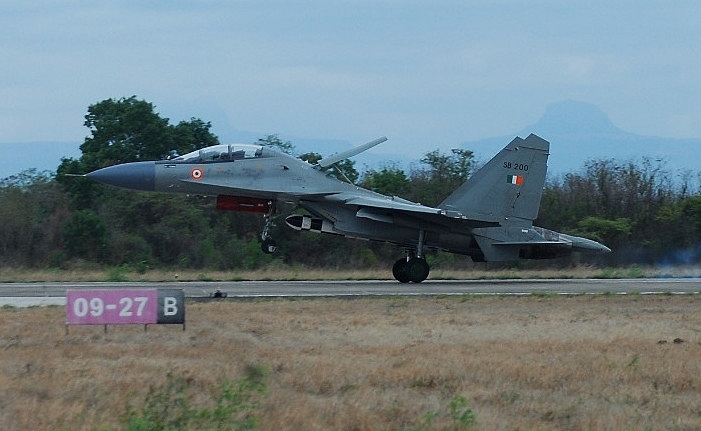Defence
Why Su-30MKI Plus BrahMos Will Be India’s Most Potent Weapons Package
- This combination brings together one of the world’s most capable fourth generation fighter and a uniquely destructive cruise missile.

A BrahMos armed Su-30MKI. (Livefist Defence)
Later this week, India will test its deadliest combination of weapons – an upgraded Su-30MKI armed with nuclear-capable BrahMos-A supersonic cruise missiles – for the first time. In what was described as a “purely Make In India effort”, a modified Indian Air Force (IAF) Su-30MKI successfully flew with a BrahMos-A missile on its belly hard-point for the first time in June 2016.
This combination, which brings together one of the world’s most capable fourth generation fighter jets and a uniquely destructive cruise missile, will make the IAF the only air force in the world in possession of a supersonic cruise missile system and will be a major force multiplier for the Indian forces. Here’s how:
One, the integration of BrahMos missiles with the Su-30MKIs will allow the IAF to carry out precision strike on targets located deep inside enemy territory and destroy well-defended installations from a stand-off range.
Vital installations such as ground radar sites and command and control centres are protected by air defence assets. Fighter jets attacking these installations often come under attack from air defence assets such as surface-to-air missiles and risk being shot down while striking pin-point targets.
However, according to BrahMos Aerospace – the India-Russia joint-venture that has developed BrahMos missile – Su-30MKIs armed with BrahMos-A missile will be able to strike enemy targets while remaining at a distance sufficient to evade enemy fire. In some cases, BrahMos-A armed Su-30MKIs will be able to strike enemy targets while flying within Indian airspace or over international waters.
Two, the high accuracy of the BrahMos missile will add to the effectiveness of air attack. The missile follows a predetermined trajectory, and can hit a hardened concrete target with perfect accuracy with supersonic velocity.
Three, the BrahMos-A can be fitted with a 200-kilogram conventional or 300-kilogram nuclear warhead. Therefore, it gives the IAF an additional nuclear-strike option, although it is not clear if the missiles have been assigned a nuclear role.
Four, air-launched BrahMos will not be as vulnerable to attack as the land-based systems which despite being mobile can be targeted by enemy fighter jets once spotted. Given the limited range of the BrahMos missiles (new generation of Brahmos missiles will have a 600 kilometer-plus range), land based systems are required to be stationed near the border, whereas the air-launched version mounted on Su-30MKIs can be based at locations far from enemy’s reach.
The IAF is slated to receive its first air-launched nuclear-capable BrahMos-A missiles in January 2018, BrahMos Aerospace joint venture co-director Alexander Maxichev told TASS news agency at the Dubai Airshow 2017 on 13 November. India plans to modify at least 42 Su-30MKIs of the IAF to carry the air-launched BrahMos-A, two of which have already undergone structural and software changes.
The effort to arm IAF’s upgraded MiG-29s, Rafale jets and Indian Navy’s MiG-29Ks, none of which can currently deploy a BrahMos-A, are currently underway. For this, lighter and smaller-diameter versions of the BrahMos are being developed.
Introducing ElectionsHQ + 50 Ground Reports Project
The 2024 elections might seem easy to guess, but there are some important questions that shouldn't be missed.
Do freebies still sway voters? Do people prioritise infrastructure when voting? How will Punjab vote?
The answers to these questions provide great insights into where we, as a country, are headed in the years to come.
Swarajya is starting a project with an aim to do 50 solid ground stories and a smart commentary service on WhatsApp, a one-of-a-kind. We'd love your support during this election season.
Click below to contribute.
Latest